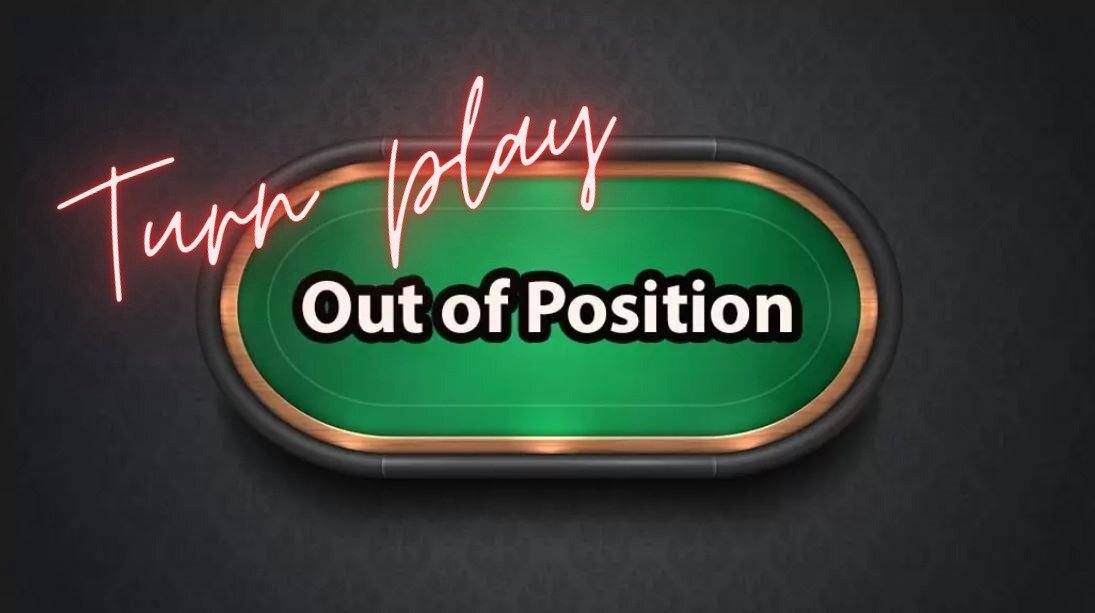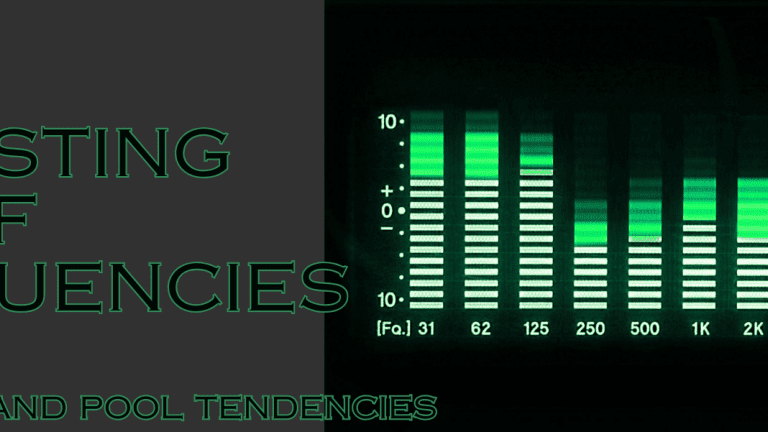Intro
This time, we’ll look at out-of-position play, which has more caveats than the in-position play. Two possible scenarios exist to play out of position in a single raised pot. Either you play blind versus blind from the Small Blind, or you open from Early-, Middle- or Cutoff position and another player cold called in position. These two situations differ significantly regarding ranges and proper strategy, so we’ll discuss them separately. We won’t discuss multiway or 3&4-bet pots today; we’ll mainly focus on how to properly approach second barrels and delayed c-bets in these tough spots.

Small Blind versus Big Blind
The blind versus blind play is the more complex but, at the same time, the more common of the cases playing out of position in single raised pots. We’ve already discussed flop plays in tricky spots when you should avoid c-betting. However, in general, there are many boards that you can go ahead and c-bet range with a 1/3 sizing. Due to the magnitude of the topic, let’s simplify your flop strategy to three categories. The range-checking mentioned above on boards that are very unfavorable to your range, the range c-betting boards where you have total range advantage from the Small Blind and last but not least, flop textures where none of the previously mentioned work. High c-betting frequency is not viable, but you have a hand that benefits more from betting than checking. Typically, it would help if you approached these boards with a medium 35-55% c-bet frequency with an elevated, 2/3-3/4 sizing. Such a board could be like  A
A  3
3  8, where a strong Ax combo definitely wants to build the pot for value, but a hand like KK or QQ is improbable to benefit from c-betting at all.
8, where a strong Ax combo definitely wants to build the pot for value, but a hand like KK or QQ is improbable to benefit from c-betting at all.
Second barrel
Consequently, there are various scenarios for reaching the turn for a second barrel. You either range-betted the flop or used a polar sizing (and hopefully range).
Let’s examine the first case and what consequences it implies. You’ve opened a pretty wide range, around 38-50% of hands, which all of its totality arrived at the turn. In contrast, the Big Blind defended around 40% of his range by calling but folded 30-55% per cent of it to even a 1/3 c-bet. That’s a huge difference; in addition, BB’s continuing range will be more connected to the board, resulting in a lot of checking in your strategy from the SB. Well, at least in theory. If you see a significant deviation in Villain’s stats from the optimal calls and folds, you should adjust accordingly.
The most important factor when constructing your second barrel range is how the turn card helped one or the other player’s range. On a dry board, when a brick hits the turn, you can apply a lot of pressure with big sizings, just as we’ve seen previously at the in-position play. On a more connected board or a straight/flush completing turn, you have to be much more careful and implement a lot of checking. This means you must check strong hands (usually those that are hard to outdraw or block a lot from Villain’s calls), be more polar regarding the bottom of your value range, and use more EQ-driven bluffs. Of course, when your opponent is a weaker or passive player, you should concentrate more on how to use that against her instead of protecting your ranges.
The turn play will follow this polar pattern when you c-bet somewhat polarized on the flop, such as in the A
A  3
3  8 example. You’ll bet big with your strongest holdings and good draws, probably mixing in with a few hands that benefit more from betting than checking (in this case, a gutshot with very little showdown EQ or a top pair like A9o, which realizes EQ better by betting than checking).
8 example. You’ll bet big with your strongest holdings and good draws, probably mixing in with a few hands that benefit more from betting than checking (in this case, a gutshot with very little showdown EQ or a top pair like A9o, which realizes EQ better by betting than checking).
Delayed c-bet
Moving on to delayed c-betting, we have two main scenarios: either you’ve range-checked the board or the texture required some checking, so you had to check strong hands, various types of draws and zero EQ hands on the flop.
Typical range checking boards blind versus blind are the low-connected flops, where BB has the nut advantage by far, such as  8
8  6
6  4 . Usually, you want to bet all of your value hands on the turn once the BB checked back the flop. Small-stakes players are terrible at checking back the right amount and type of hands, so you can conclude that most of their value/protection and draws will be in their betting range, leaving the check back range weaker than it should be. Resulting in most draw completing turns will heavily favor you, and overcards (especially broadways) are also good candidates to delay c-bet on. The ace is a bit of an exception, as we assume a lot of checkbacks from weak pairs and ace-high hands on the flop.
4 . Usually, you want to bet all of your value hands on the turn once the BB checked back the flop. Small-stakes players are terrible at checking back the right amount and type of hands, so you can conclude that most of their value/protection and draws will be in their betting range, leaving the check back range weaker than it should be. Resulting in most draw completing turns will heavily favor you, and overcards (especially broadways) are also good candidates to delay c-bet on. The ace is a bit of an exception, as we assume a lot of checkbacks from weak pairs and ace-high hands on the flop.
The same rule applies to boards where you’ve protected your checking range. For example, on a  T
T  3
3  9 flop, you should still have a lot of hands for value: sets, two-pairs and top pairs, and strong draws, besides some hands that picked up EQ on the turn, such as backdoor straight and flush draws. Usually, you want to check give-up hands that didn’t improve or hands that don’t benefit from betting. Like an ace-high hand that only folds out a worse hand with little EQ to improve but block folds simultaneously. The better the turn card, the bigger you want to bet to apply pressure, as we’ve seen on multiple occasions. The worse the turn card is (for instance, a
9 flop, you should still have a lot of hands for value: sets, two-pairs and top pairs, and strong draws, besides some hands that picked up EQ on the turn, such as backdoor straight and flush draws. Usually, you want to check give-up hands that didn’t improve or hands that don’t benefit from betting. Like an ace-high hand that only folds out a worse hand with little EQ to improve but block folds simultaneously. The better the turn card, the bigger you want to bet to apply pressure, as we’ve seen on multiple occasions. The worse the turn card is (for instance, a  9 in our example), the smaller you want to bet in theory. Hands that improve the perceived check back range are where you should be the most cautious, such as 2nd and 3rd pair pairing or an ace.
9 in our example), the smaller you want to bet in theory. Hands that improve the perceived check back range are where you should be the most cautious, such as 2nd and 3rd pair pairing or an ace.
You open and someone cold calls from IP
Nowadays, it is a much less common situation since more and more players approach the game preflop from a GTO perspective, which avoids cold calling in position, especially in a high-rake environment such as small and low-stakes online poker. However, there is a little cold calling from the Button even in GTO ranges; besides that, some players like the old-school approach or have/assume an edge on their opponents and cold calls pretty wide ranges. In this section, we’ll omit topics like playing against recreational players; although most in-position cold calling comes from them, they commit such huge mistakes post-flop that we should focus on exploiting them instead of applying a theoretically sound strategy.
In-position cold call ranges differ from the Big Blind cold calls; they are far narrower, 3-15% and more condensed around medium-strength hands, such as small-medium pocket pairs, suited connectors and some broadway hand or Axs combos. In terms of flop textures, usually, we can apply more pressure on dry boards and broadway-containing flops, but we have to respect low-connected and ace-high boards just as in other out-of-position spots. Applying 2/3 sizing with a polarized range on the flop is more common than using a 1/3 range betting approach.
Hence, arriving at the turn will be very similar to SBvBB spots when we used a polarizing strategy; remember the  A
A  3
3  8 example. Because the cold calling range in position is narrower (and probably easier to define), exploits and the importance of the turn card are even more marked. For example, a good sign when you want to apply pressure is if your opponent folds little on the flop but starts to fold a lot on the turn, combined with a low went-to-showdown (wtsd) number (preferably less than 28). Passive opponents with low aggression are also good candidates to attack continuously or by delay c-betting a lot, especially on turn cards that only improved our range (such as overcards and previously discussed draw-completing cards). When you absolutely should give up, if you find an opponent who refuses to give up spots, fights a lot to get to showdowns, bets or raises a lot on any of the streets. In this case, you should tend to bet more for value and bluff hands that are not afraid to face aggression.
8 example. Because the cold calling range in position is narrower (and probably easier to define), exploits and the importance of the turn card are even more marked. For example, a good sign when you want to apply pressure is if your opponent folds little on the flop but starts to fold a lot on the turn, combined with a low went-to-showdown (wtsd) number (preferably less than 28). Passive opponents with low aggression are also good candidates to attack continuously or by delay c-betting a lot, especially on turn cards that only improved our range (such as overcards and previously discussed draw-completing cards). When you absolutely should give up, if you find an opponent who refuses to give up spots, fights a lot to get to showdowns, bets or raises a lot on any of the streets. In this case, you should tend to bet more for value and bluff hands that are not afraid to face aggression.
Summary
The turn play out of position as the preflop opener is one of the trickiest spots you’ll find yourself playing poker. There will be a high stack-to-pot ratio in single-raised pots, and you have a positional disadvantage. While in position, you can decide to play out your EQ; when you are out of position, you’ll be tested multiple times during the hand. Therefore, you have to protect your checking ranges on boards that are very bad to your entire range in general by adding solid hands in the checking branch of the game tree. The blind versus blind play is especially difficult due to the wide ranges of both players. Always examine how the turn card connects to both players’ ranges and construct your range accordingly. Exploits are also a crucial part of your success, especially on low stakes where the player pool lacks the protection of their checkback ranges, which makes it easier to define their holdings. Besides their misplayed ranges, their errors will also be highlighted in their statistics, so you should focus on adjusting to your specific opponent in the hand.
Hopefully, this article finds you well, and you’ll be successful playing the turn after reading it!
Good luck at the tables!




















